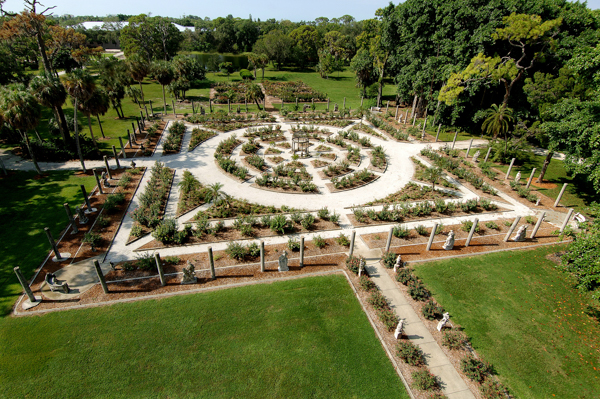Rose Garden unexpected and fragrant delight during Ringling visit
By Elena del Valle
Photos by Gary Cox*
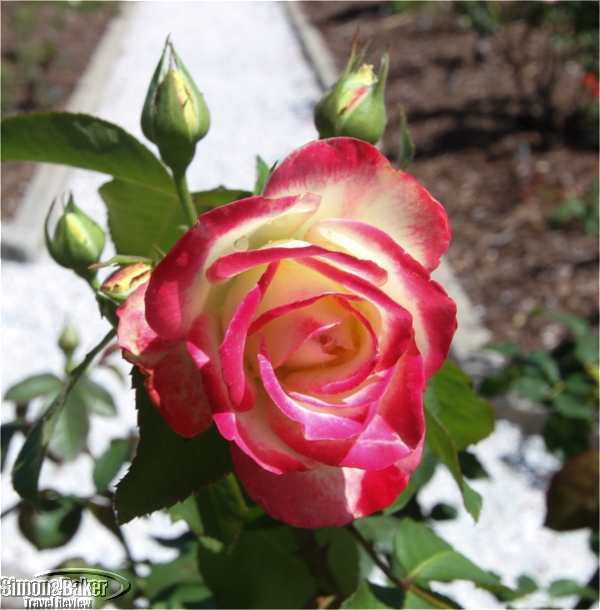
On a spring visit to the John and Mable Ringling Museum of Art in Sarasota, Florida we discovered the Mable Ringling Rose Garden (John and Mable Ringling Museum of Art, 5401 Bay Shore Road, Sarasota, Florida 34243, +1 941-359-5700 ext 2109, https://www.ringling.org/, Karen.smith@ringling.org). It was one of those sunny yet chilly and breezy days that is perfect for outdoor strolling. We saw the garden on our way to John and Mable’s storied home, now a museum, and made a point of stopping.
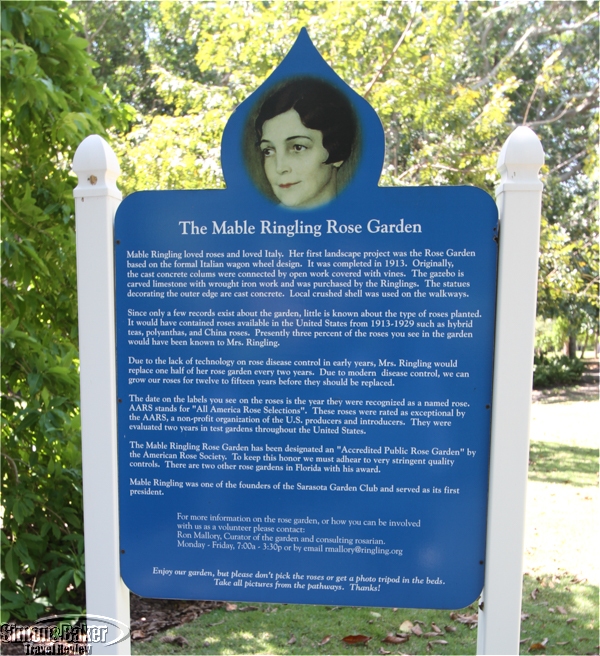
A signs described the history of the rose garden.
It was one of the highlights of our visit. I especially enjoyed the often fragrant flowers in 18 hues (the American Rose Society recognizes 18 colors of roses, a Ringling spokesperson explained by email), each with a name tag at the foot of the bush. The new name tags indicated if the rose was fragrant, Karen Smith, MSc., curator since 2015, Mable Ringling Rose Garden, explained when I asked about a particular flower a volunteer had suggested I see.
Flower fragrance is not a straightforward matter it turns out. It varies, according to the ratings of the American Rose Society, from Strong, Moderate and Mild, to None. So many roses were scented I was not surprised to discover 81 percent of the roses had some scent.
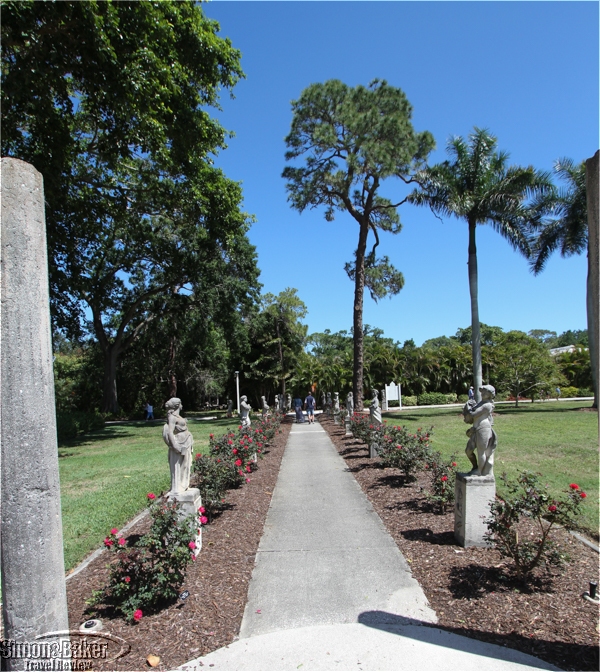
One of the paths lined with statues
At the time of our visit, excluding the miniatures and miniflora’s, 40 percent of the roses had a Strong scent, 19 percent Moderate, 22 percent Mild and 19 percent had no fragrance.
Ms. Smith is a former research scientist in the neuroscience field. Throughout thirty years in science, horticulture was always a part of her life. Care of the garden was no accident. Although she was the only employee dedicated to the garden when needed six estate gardeners were available to lend a hand. And 26 volunteers, including 15 seasonal visitors to the area, worked in the garden from three to 12 hours per month.

Karen Smith, MSc., curator, Mable Ringling Rose Garden
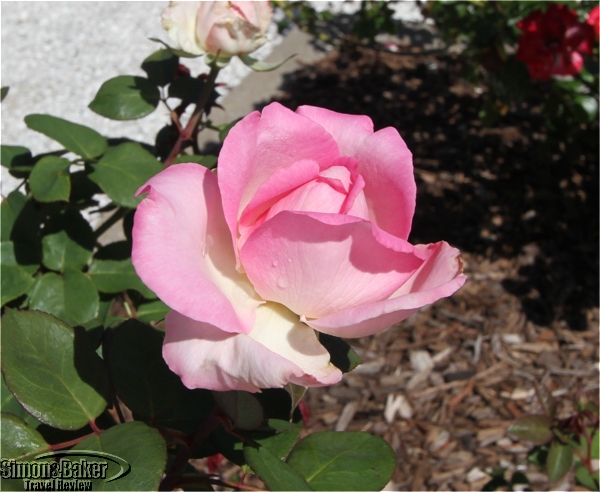
There are many challenges and stresses that can affect rose plants, the garden curator explained. She relies on Best Management Practices and a weekly monitoring system during which more than 100 bushes are inspected each week.
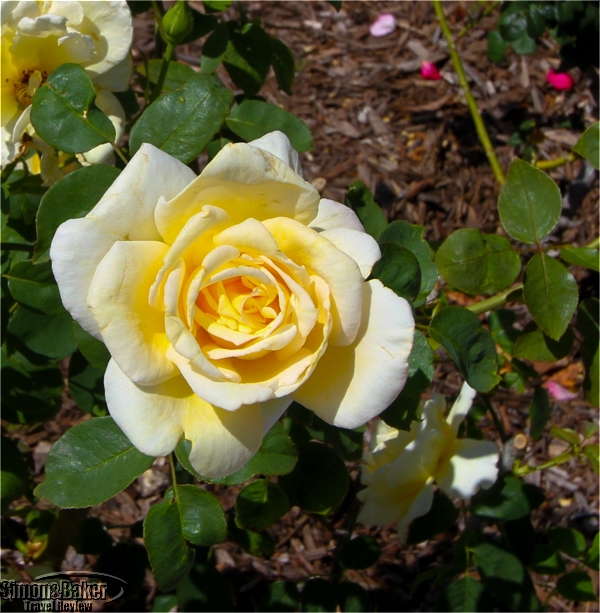
“A rating is given for pests and diseases,” she said by email. “If it is determined that the disease or pest is at a level that is unacceptable, treatment occurs. We use the safest treatment possible for each situation. For example when the weather is cool enough we will use Neem Oil as our pesticide for Aphids, Mites, Thrip, and Scale. Every spring we remove the old mulch and bring in 75 cubic yards of compost, fertilize, and re-mulch
When asked for fertilizer specifics she shared details generously, “Currently for fertilizer we use a 4-3-4 Turkey Manure (Mighty Grow) and 16-0-0 Blood meal – each four times a year. Supplement with a Sul-Po-Mag (0-0-22) twice a year. For example to fertilize once using the Mighty Grow takes 650 lbs.”
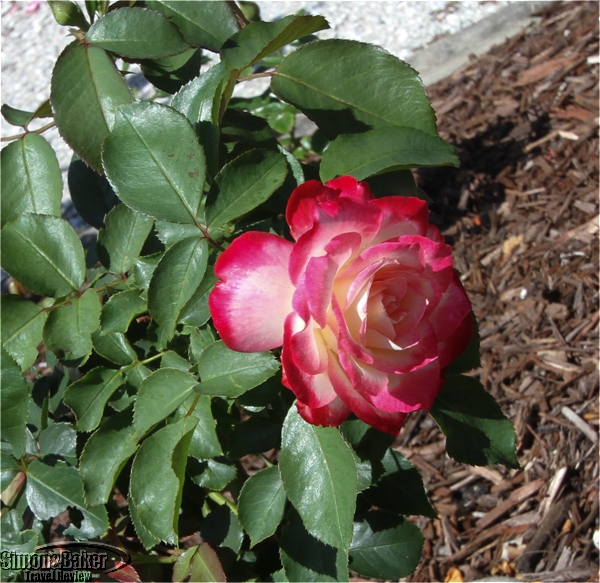
What are the best months to see the roses in bloom and at their most fragrant? December and January as well as March and April. In 2017 Hurricane Irma caused some damage to the garden so it was not at its prettiest during our visit.
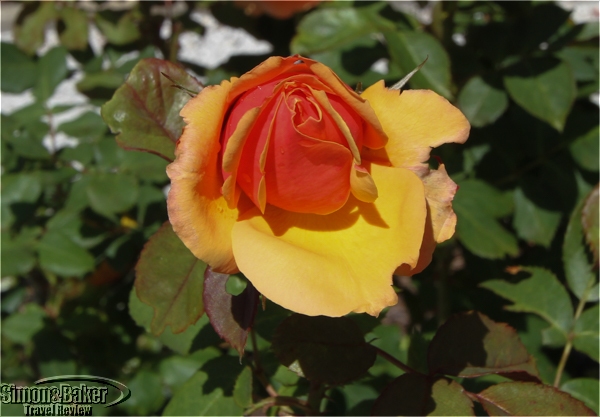
“We have two cut-backs a year, one in February and one in September, the garden curator said. “The large blooms occur approximately 8 weeks after cutback. It take us 3 weeks to complete the cutback- therefore the bloom is in phases comparable to the cutback.”
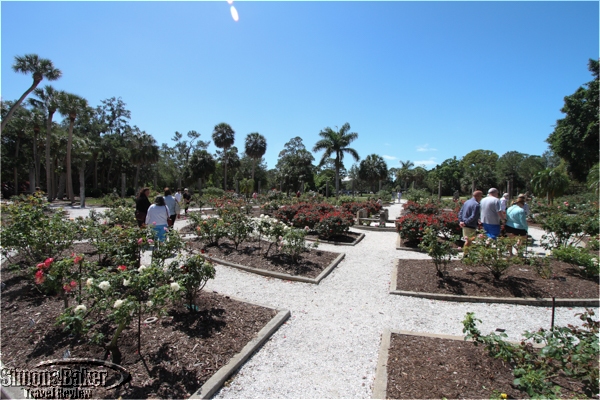
Many visitors strolled through the garden on the day of our visit.
We later discovered the garden dates back to 1913. Sadly, none of the plants from Mable’s era remain. The garden consists of 1,200 rose plants introduced between 1793 and 2002, among them Tree Roses, Hybrid Teas, Floribundas, Grandifloras, miniature roses, shrubs, Old Garden Roses (varieties introduced prior to 1867). Among them was a rose dedicated to Mable.
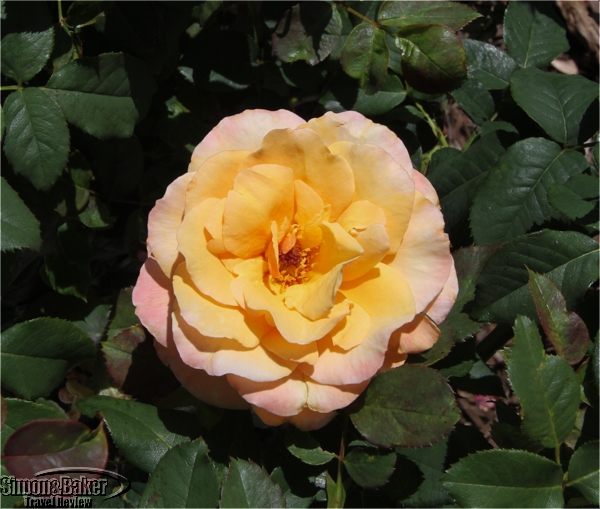
The Italian inspired Rose Garden has a circular wagon wheel design.
(Click photo to view full size)
The 27,225 square foot Italian inspired Rose Garden has a circular wagon wheel design and pathways lined with garden sculptures of courting couples in pastoral scenes. By the late 1930s the estate and the garden fell into disrepair. Many years passed before it returned to a state similar to the one we saw during our visit. By 2004 the garden was restored thanks to the efforts of the resident horticulturist, Ron Mallory and the volunteers he recruited.
It received accreditation from the All-American Rose Selections in 2004, and recognition in 2006 as the most outstanding All-American Rose Selections Public Rose Garden in the nation.
*Aerial photo of the Rose Garden (date unknown) courtesy of the John and Mable Ringling Museum of Art

